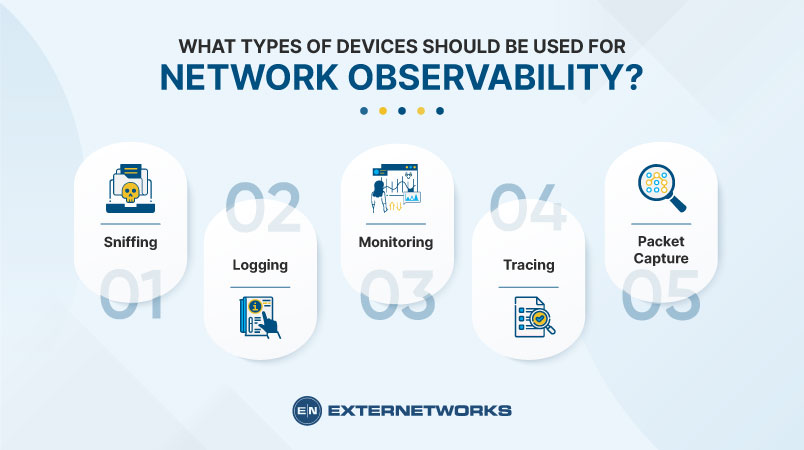Observability is the ability to monitor and analyze data from a network or system. This helps us gain insights into our systems and networks, allowing us to identify problems before they occur.
Modern businesses rely on their network infrastructure to function efficiently, and the problem is that these networks often contain sensitive information that should remain private. You can access all the data traveling across your network without compromising privacy by using network monitoring tools.
Network observability is gathering information from a network device by using various methods that help understand what is going on within the network. It includes capturing packets, analyzing packet content, and examining protocol headers. The term “observability” comes from the fact that you have to be able to observe something to make sense of it. For example, if you want to understand why a particular host is not responding to ping, you must first be able to observe the connection attempt. Similarly, when you want to understand the behavior of an application, you must be able to capture its communications.
Network observability works by capturing packets and analyzing them. Packets contain information about the sender, receiver, protocol used, size, time, etc. These records are stored in a database for later analysis.
The most common way to collect network observability data is via packet sniffers. Packet sniffers are software programs that intercept packets and record all data passing over a network interface. They gather information about network protocols and identify individual hosts. To use a packet sniffer effectively, you should configure it to log only the relevant packets. You can then examine the captured packets later to determine what information they contain.
There are many types of packet sniffers available today. Some are designed to run on top of operating systems like Windows, Linux, macOS, etc., while others are standalone utilities that do not require additional software. Examples include Wireshark, tcpdump, Ettercap, Snort, Bro, Netflow, etc.
There are several ways of collecting information about the network, and some are better suited for specific tasks, while others are good. Let’s take a look at some of them:

There are many benefits associated with network observability. Here are some of the top ones:
There are many situations where you would like to use network observability. One of the reasons is to troubleshoot connectivity issues. If you have a web server that doesn’t respond to incoming requests, you can try to figure out why. To do this, you can use a packet sniffer to capture the traffic going across the network.
Once you know where the issue lies, you can fix it. Another reason to use network observability is to improve the reliability of your network. If you detect that some component isn’t working properly, you can check its logs and run tests to make sure everything is functioning correctly.
In Conclusion, Using network observability will give you more insight into the behavior of the network. As a result, you can identify potential problems before they become serious. In addition, you can also learn about the different protocols used in the network.
Ensure that your systems remain safe and secure with our Network Monitoring Services to save time and cost.
